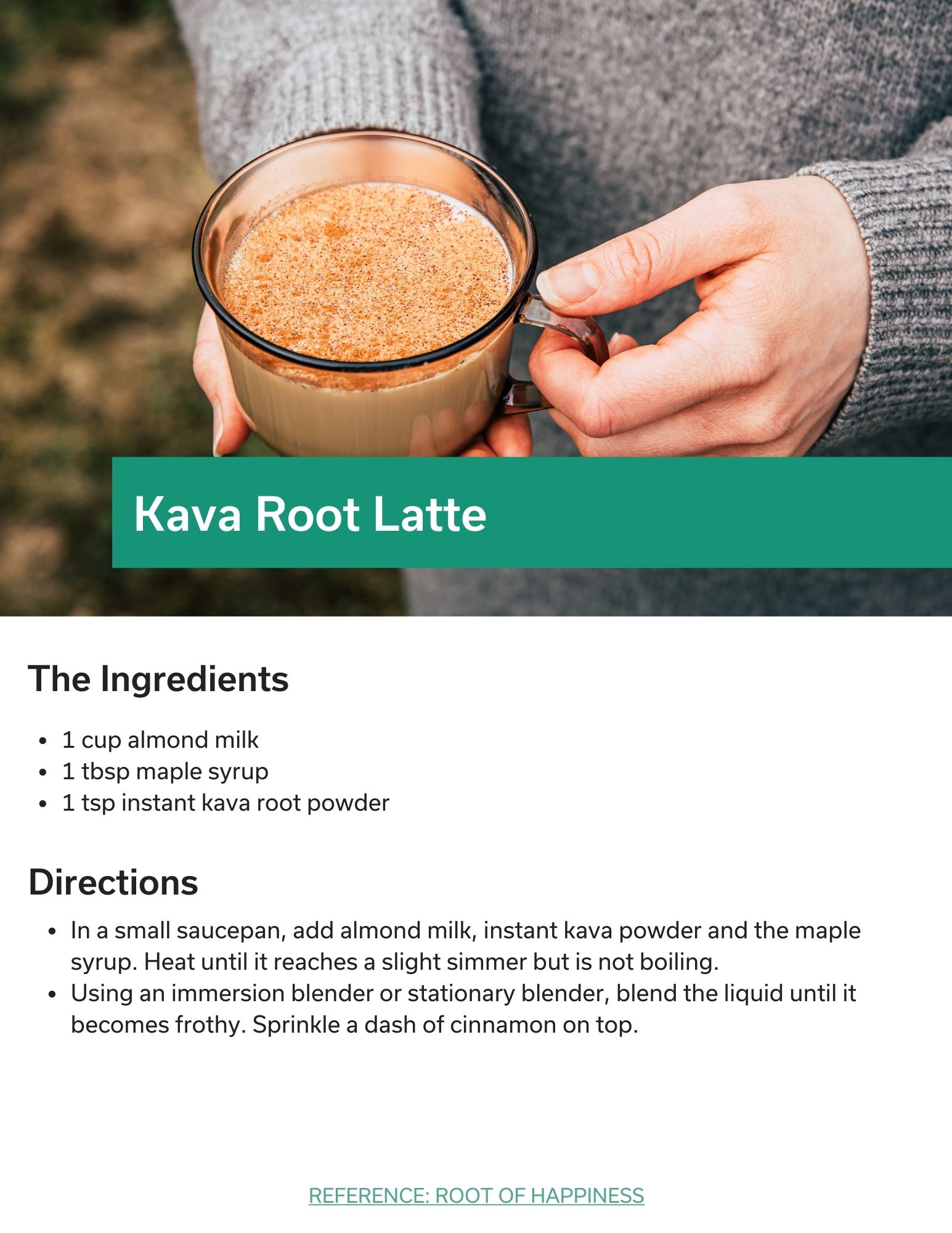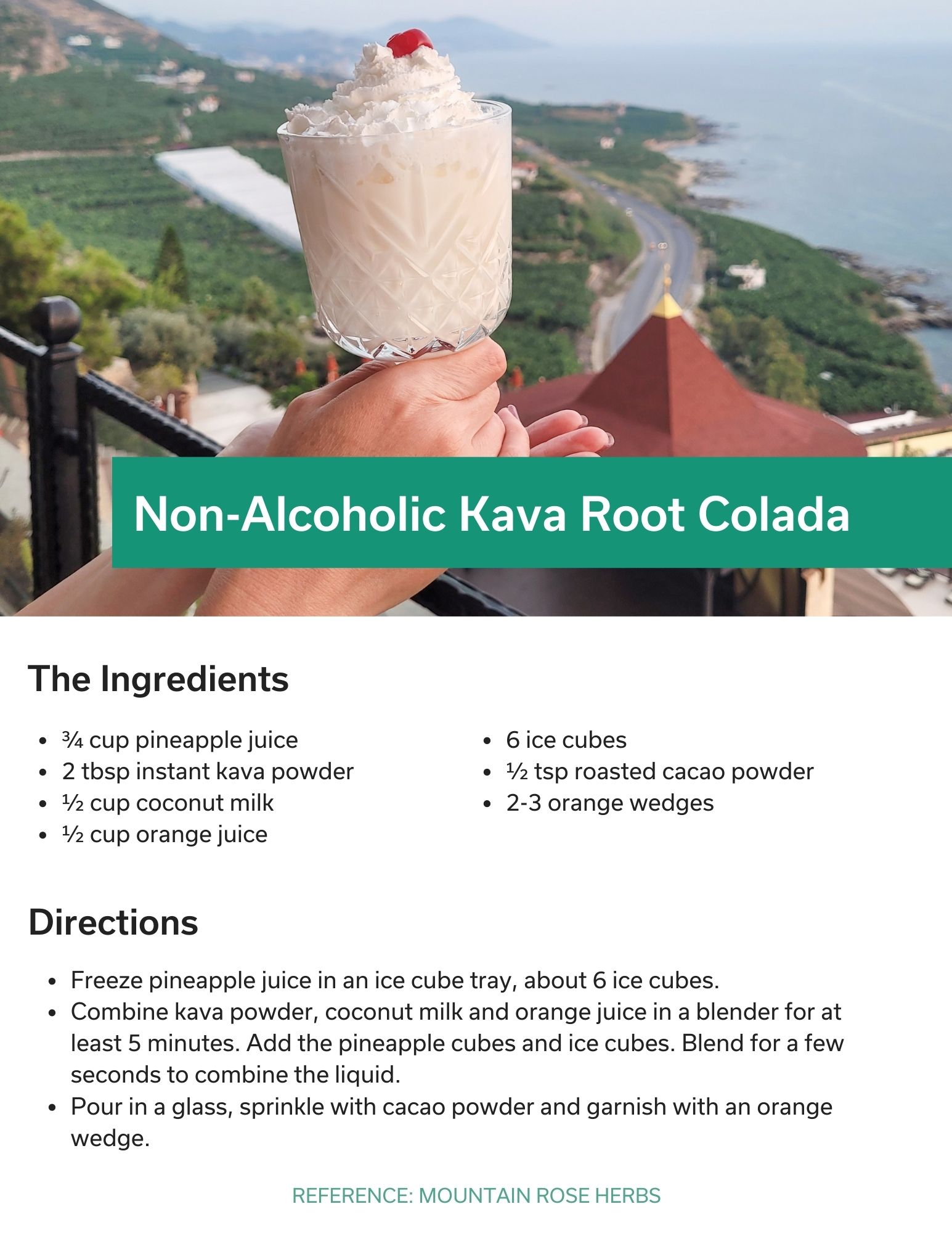Kava Root: What is it and Are There Health Benefits?

The next time you’re in a big city, stop and look at your surroundings. Chances are you might find a kava bar, one of the growing alternatives to social drinking. Kava bars serve drinks and teas that use kava root, a part of a plant from the South Pacific known for its calming effects. With more and more kava-based products showing up, we decided to explore the effect kava root has on your brain and if there are any health benefits.
What is kava root?
Kava root comes from a tall shrub called Piper methysticum, which is native to islands in the South Pacific (Hawaii, Fiji, Tonga, Samoa, New Guinea). Above the ground, the plant has green, heart-shaped leaves that produce flowers. In the ground, kava roots grow woody branches that have been cultivated for centuries for its medical uses.
To prepare kava, the roots are ground into a powder, soaked in water and then strained to produce a brown liquid. The finished product has an earthy, bitter taste. Before kava root was commercially processed, Pacific Islanders would crush and chew the root before soaking it in water.
Kava root grew in popularity during the 18th century when it was introduced to Europeans after James Cook, a captain who explored the South Pacific, detailed how it was used for ceremonial purposes.
By the early 2000s, kava root became more popular in the United States as a dietary supplement. It is most commonly consumed as a tea, but it’s also available as tinctures, extracts, capsules or tablets.
Nowadays, some major cities, including New York and Austin, Texas, have dedicated kava bars. Much like coffee shops, these gathering places use kava root as a social alternative to bars and taverns that focus on alcohol – kava bars increased by 30 percent in the U.S. from 2012 to 2017. Some brands have even started to produce packaged kava drinks to consume in place of beer, wine or hard seltzers.
What does kava root do to the brain?
Initially, kava root was used in both social settings as a part of funerals or other religious events and for medicinal purposes. When ingested, kava root acts as a depressant on the brain – the Latin name Piper methysticum translates to “intoxicating pepper” – providing a calming effect due to its ability to slow down how the brain operates. As a result, it was used as a way to counteract anxiety, restlessness and insomnia. The mild euphoria feeling also has made it a popular alternative to drinking alcohol.
Kava root contains chemicals called kavalactones, including kawain, dihydrokawain and methysticum. These chemicals work in several ways in the brain, most notably by binding to gamma-aminobutyric acid (GABA), a neurotransmitter that blocks impulses between brain cells.
Additionally, kavalactones also play a role in norepinephrine and dopamine reuptake inhibition. Norepinephrine and dopamine are two neurotransmitters that regulate mood, and reuptake inhibition simply means it delays the brain from reabsorbing these chemicals, thus allowing them to boost your mood and provide a sense of euphoria.
Is kava root good for you?
Kava root is sometimes referred to as a natural version of Xanax, the popular drug used to control anxiety, due to its anxiolytic (anti-anxiety) properties. While Xanax is a type of benzodiazepine known for its sedative and impairing qualities, kava root has more of a mild effect and is non-addictive.
Once ingested, kava root can make you feel happy, relaxed and mildly sleepy. It can also reduce your appetite or make your mouth or tongue numb or tingle due to pain-relieving properties. In large amounts, kava root can cause drowsiness, nausea or a loss of muscle control.
Kava root benefits
Of all the purported benefits, kava root is most closely associated with helping to treat anxiety. The theory is kavalactones can help balance hormones that lead to stress. However, studies remain mixed.
On one hand, a Cochrane Review of several studies determined that, when compared against a placebo, kava root is an effective treatment for anxiety. However, the study noted the results were based on a small sample size and for a short treatment duration. It also recommended more long-term trials would be needed to determine the safety and efficacy.
Another study of 171 participants revealed no significant association between kava root and the placebo.
Are there risks?
Whether you drink kava root for anxiety or as an alternative to alcohol, there are some things to consider. In the early 2000s, kava root made headlines for its possible association with liver damage. The concern is how kava root requires liver enzymes to break down chemicals in the drink, which can prevent other enzymes from breaking down other drugs and become harmful to the liver.
At the time, some European countries pulled kava root off their shelves due to reported cases of liver damage. It wasn’t clear, though, if the kava root caused the liver damage or if people took other drugs with kava root to cause the medical complications. Either way, the Food and Drug Administration (FDA) felt strongly enough to issue a consumer advisory in 2002 to warn customers about the rare but possible effect of liver failure.
Since then, the stance on kava’s potential impacts on the liver have softened. Even a 2007 study of rats showed no signs of increased liver injury after feeding them kava root for three months.
Although kava root’s impact on the liver seems to be rare, problems may still occur if you take high doses of kava root (stick to less than 400 mg per day) and use it for an extended period of time. As a precaution, you should stay away from kava root if you have liver disease.
The main risk associated with consuming kava root is the potential unknown of its origin and production. All kava plans aren’t created equal – the species in Fiji may not be the same as the species in Samoa. More specifically, types of kava can have varying concentrations of chemical components. Plus, the production process may include many parts of the plant to save money. However, the roots, instead of the stems or leaves, are the safest way to consume kava because of the low alkaloid content. The stems and leaves are higher in alkaloids, meaning they’re more toxic.
When shopping for kava root, look for products that list the kavalactone and other notable ingredients. Avoid buying anything marketed as a proprietary blend as this is a generic term that doesn’t tell you where or how the kava is sourced.
How to prepare kava root powder
The bottom line is consuming kava root may have some health benefits, but you should consult with your doctor before consuming any type of dietary supplement. If you do get clearance and decide to try kava root for yourself, using it as a powder is the easiest way to incorporate it into smoothies or drinks. Note: You should avoid mixing kava root with alcohol.
Kava root latte
Kava root is earthy on its own, making it a common use for both tea- and coffee-based drinks. This version has three simple ingredients, including instant kava root powder so you don’t have to steep and strain it.
Kava milkshake
The bitter components of both kava root and unsweetened cocoa powder may seem like an odd pair, but the addition of coconut milk for richness and sugar for sweetness help provide balance to this drink.
Non-alcoholic kava colada
Instead of a non-alcoholic pina colada, try this version with kava root powder. The sweetness from the pineapple and orange juice balance the earthy kava root.
For more news on trending health topics and nutrition, visit the INTEGRIS Health For You blog.






